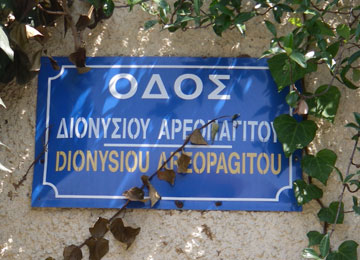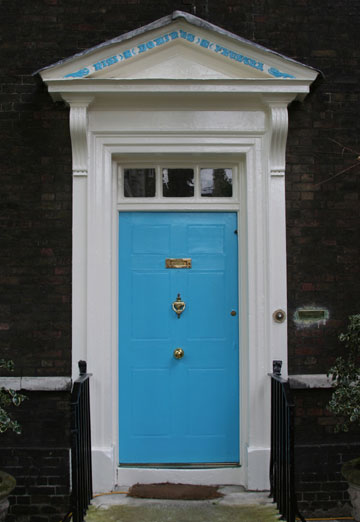In my last post I talked about having fun decoding some of the modern Greek I saw during my recent trip to Europe. I also enjoyed some of the peculiarities of English in Britain. Of course the Brit might well object that their ways are standard, and ours are peculiar, since their claim to English is stronger than ours. And they may well be right. Nevertheless, I found some of the differences between “English English” and “American English” to be curious.
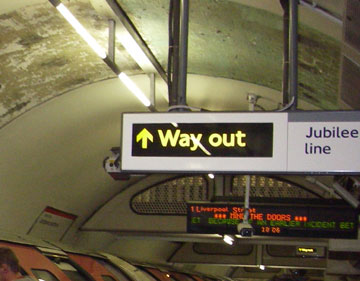 For example, all around London, but especially in Tube (subway) stations, you see signs reading “Way Out.” Now this isn’t a value judgment, such as we might say “Far Out.” Rather, it’s simply a helpful indicator of the way out of the station. In America the signs would read “Exit.” But I think the British version is more helpful. Who could get confused over “Way Out”?
For example, all around London, but especially in Tube (subway) stations, you see signs reading “Way Out.” Now this isn’t a value judgment, such as we might say “Far Out.” Rather, it’s simply a helpful indicator of the way out of the station. In America the signs would read “Exit.” But I think the British version is more helpful. Who could get confused over “Way Out”?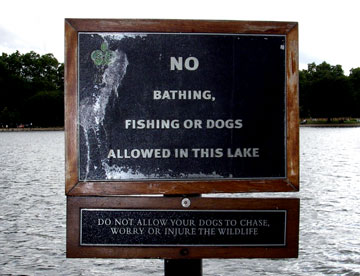
In Hyde Park I saw a sign that made me laugh. The top part of the sign was ordinary: “NO BATHING, FISHING, OR DOGS ALLOWED IN THIS LAKE.” But the fine print was unusual: “DO NOT ALLOW YOUR DOGS TO CHASE, WORRY OR INJURE THE WILDLIFE.” Up until the moment I saw this sign, I never realized that wildlife could be worried! I’m guessing that “worry” in this context means something like “disturb.” We’d say, “Do not allow your dogs to chase, disturb, or worry the wildlife.” “Worry” is certainly more emotionally suggestive than “disturb.”
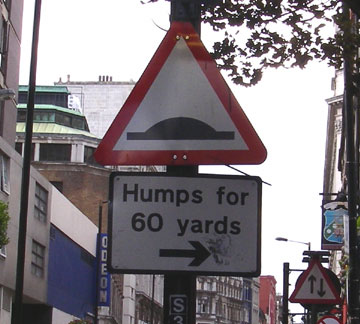 In the middle of London I saw another sign that made me chuckle. It read, “Humps for 60 yards.” The illustration showed a picture of a single “hump.” Sure enough, what the sign pointed out was what we would call “speed bumps.” Bumps? Humps? Pretty much the same, I guess, unless you’re a junior high boy with a devious imagination. So, if you’re driving in London, which I’d advise all Americans to avoid, watch out for those humps!
In the middle of London I saw another sign that made me chuckle. It read, “Humps for 60 yards.” The illustration showed a picture of a single “hump.” Sure enough, what the sign pointed out was what we would call “speed bumps.” Bumps? Humps? Pretty much the same, I guess, unless you’re a junior high boy with a devious imagination. So, if you’re driving in London, which I’d advise all Americans to avoid, watch out for those humps!
More from Beliefnet and our partners
